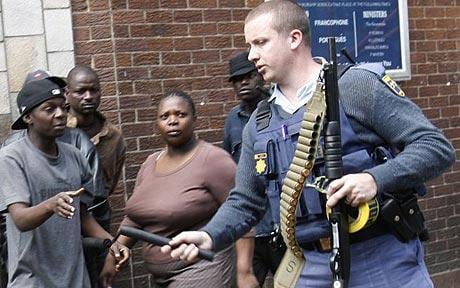
Ishrat Jahan
On the morning of June 15, 2004, in Ahmedabad, in the state of Gujarat in India, Ishrat Jahan and three others were killed by police. In India, these events are commonly referred to as encounters. The government claimed that Ishrat Jahan was “India’s first woman terrorist”. A recent magistrate report suggests that Jahan was simply a college student with no ties to any terrorist group whatsoever, and that the claims by the State were cynically manufactured. In India, this is a cause célèbre. In Gujarat, it is said, a dead woman haunts the State. The State is haunted.
A haunted State is a state that exists in the aftermath, a state in which the real occurs after the event, in which ethics is always deferred, always for a later determination.
Italy is a haunted State. Six Italian soldiers were killed last week in Afghanistan. Monday was a national day of mourning. As Italians gathered in the tens of thousands, it was not the soldiers who were said to haunt the assembled but rather “this gray area between peacekeeping, peace enforcement and combat operations….The ambiguity has haunted the country”. This ambiguity is precisely the clarity of the aftermath. We don’t know exactly what our mission is, but we will, once it’s accomplished. When it comes to war, the aftermath justifies the means … and the deaths.
But it’s not just the military branches of government that rely on the continual deferral of the aftermath. For example, Lauro L. Baja, Jr., a distinguished Philippine ambassador at the end of an illustrious career, faces the ignominy of a court trial: “When Lauro L. Baja Jr. returned to his native Philippines in 2007, he had just finished a four-year stint as ambassador to the United Nations that included two terms as president of the Security Council. A storied diplomatic career that began in 1967 culminated with the Philippine president conferring upon him the highest award for foreign service. Then a three-month episode from his U.N. days returned to haunt him. He was sued by Marichu Suarez Baoanan, who had worked as a maid in New York City for Baja and his wife, Norma Castro Baja. Baoanan, 40, said the Bajas brought her to the United States in 2006 promising to find her work as a nurse. Instead, Baoanan said, she was forced to endure 126-hour workweeks with no pay, performing household chores and caring for the couple’s grandchild. Baja denied the charges, saying Baoanan was compensated. He also invoked diplomatic immunity — a right that usually halts such cases in their tracks.”
How does this haunting work, and what does it tell us? If the allegations in the Baja case are proven, somehow those who committed the violence are haunted, because they are the subjects of history, the actors. What about Marichu Suarez Baoanan? Or Mildrate Yancho Nchang, who worked without pay or a day off for three years and then went to hospital when her employer, a Cameroonian diplomat’s wife, beat her severely. What happened to the diplomats? They got off. Diplomatic immunity.
Diplomatic immunity is one issue, a matter of rule of law and interpretations of sovereignty. Existential immunity is another. Who haunts, who is haunted, how does haunting work, and, finally, is haunting gendered?
These are stories of aftermath. From India to Italy to diplomats’ households, the haunting only begins once the period called aftermath has begun. To be confronted with or to struggle with aftermath is to be haunted, but what exactly is aftermath? “A state or condition left by a (usu. unpleasant) event, or some further occurrence arising from it” and before that, aftermath is the “second or later mowing; the crop of grass which springs up after the mowing in early summer”. The math is the mowing itself, the action and process of chopping down. The aftermath is the grass that follows the violence and the act of mowing it, again and again and again. What is the gender of math? At its root, feminine. And what is the gender of aftermath? Woman. Ask those who haunt. They’ll tell you.
(Photo Credit: news18)




